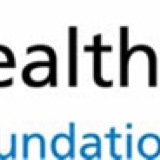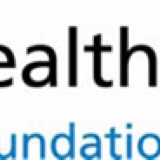Information
-
Document No.
-
Audit Title
-
Site Name
- West Berkshire Community Hospital
- Upton Hospital
- St Marks Hospital
- King Edwards VII Hospital
- Wokingham Hospital
- Prospect Park Hospital
- Wexham Park Hospital
- Heatherwood Hospital
- Unit 7, Theale
- 57-59 Bath Road
-
Site Block Number
- 1
- 2
- 3
- 4
- 5
- 6
- 7
- 8
- 9
- 10
- 11
- 12
- 13
- 14
- 15
- 16
- 17
- 18
- 19
- 20
- 21
- 22
- 23
- 24
- 25
- 26
- 27
- 28
- 29
- 30
- 31
- 32
- 33
- 34
- 35
-
Conducted on
-
Assessor
- Lloyd Smith, BHFT Fire Safety Advisor
- Jill Griffiths, H&S Advisor
- Kellie Wilden, LSMS
- Matt Kino-Wylam, Datix Team Lead
- Mike Craissati, LSMS
- Darryl Stevens, Compliance and Risk Services Manager
- Bernice Baverstock, H&S Advisor
- Matt Watts, Business Continuity Planner
-
Reviewer
- Lloyd Smith, BHFT Fire Safety Advisor
- Jill Griffiths, H&S Advisor
- Kellie Wilden, LSMS
- Matt Kino-Wylam, Datix Team Lead
- Mike Craissati, LSMS
- Darryl Stevens, Compliance and Risk Services Manager
- Bernice Baverstock, H&S Advisor
- Matt Watts, Business Continuity Planner
-
Location
General Information
-
Location Photo
-
Company Undertaking Assessment
- Berkshire Healthcare NHS Foundation Trust
- Clinical Commissioning Group
- Commissioning Support Unit
- NHS Property Services
- Berkshire East Federation
- Berkshire West Federation
- NHS Berkshire
- Department of Health
-
Location
-
On behalf of (company/organisation)
- Berkshire Healthcare NHS Foundation Trust
- Clinical Commissioning Group
- Commissioning Support Unit
- NHS Property Services
- Berkshire East Federation
- Berkshire West Federation
- NHS Berkshire
- Department of Health
-
Building Owner/Landlord
- Berkshire Healthcare NHS Foundation Trust
- Clinical Commissioning Group
- Commissioning Support Unit
- NHS Property Services
- Berkshire East Federation
- Berkshire West Federation
- NHS Berkshire
- Department of Health
-
Building Occupier
- Berkshire Healthcare NHS Foundation Trust
- Clinical Commissioning Group
- Commissioning Support Unit
- NHS Property Services
- Berkshire East Federation
- Berkshire West Federation
- NHS Berkshire
- Department of Health
-
Distribution List (Name, Job Title and Email)
- Julian Emms, CEO for BHFT - julian.emms@berkshire.nhs.uk
- David Townsend, BHFT Board Level Director responsible for Fire Safety - david.townsend@berkshire.nhs.uk
- Christian Haw, BHFT Operational Estates Manager - christian.haw@berkshire.nhs.uk
- Nigel Lloyd, BHFT Senior Estates Manager - nigel.lloyd@berkshire.nhs.uk
- Property Information Administrator & Site Co-ordinator - anne.hamilton@berkshire.nhs.uk
- Local Responsible Person, see section responsible/Competent Person/s - Distributed to by the Fire Safety Team.
- Owner/Landlord, see section Responsible/Competent Person/s - Distributed to by Property Information Administrator & Site Co-ordinator
- Nikki Kirk, PFI Performance Manager - nicola.kirk@berkshire.nhs.uk
- Trish Day, Facilities Liaison Manager - trish.day@berkshire.nhs.uk
- Ifor Sheldon, SGP Contracts Manager WBCH - Ifor.sheldon@sgp.co.uk
- Darryi Stevens, Compliance and Risk Services Team Manager - darryl.stevens@berkshire.nhs.uk
- Phil Watkins, Head of Compliance & Risk Services - Phil.watkins@berkshire.nhs.uk
Significant Findings - Snap Shot of High Risk Findings
-
A.<br><br>
-
B.<br>
-
C.<br>
-
D.<br>
-
E.<br>
Responsible/Competent Persons
-
Landlord/Owner of the Building
-
Organisation/Trust Responsible Person
- Julian Emms, CEO for BHFT - julian.emms@berkshire.nhs.uk
- David Townsend, BHFT Board Level Director responsible for Fire Safety - david.townsend@berkshire.nhs.uk
- Christian Haw, BHFT Operational Estates Manager - christian.haw@berkshire.nhs.uk
- Nigel Lloyd, BHFT Senior Estates Manager - nigel.lloyd@berkshire.nhs.uk
- Property Information Administrator & Site Co-ordinator - anne.hamilton@berkshire.nhs.uk
- Local Responsible Person, see section responsible/Competent Person/s - Distributed to by the Fire Safety Team.
- Owner/Landlord, see section Responsible/Competent Person/s - Distributed to by Property Information Administrator & Site Co-ordinator
- Nikki Kirk, PFI Performance Manager - nicola.kirk@berkshire.nhs.uk
- Trish Day, Facilities Liaison Manager - trish.day@berkshire.nhs.uk
- Ifor Sheldon, SGP Contracts Manager WBCH - Ifor.sheldon@sgp.co.uk
- Darryi Stevens, Compliance and Risk Services Team Manager - darryl.stevens@berkshire.nhs.uk
- Phil Watkins, Head of Compliance & Risk Services - Phil.watkins@berkshire.nhs.uk
-
Local Responsible Person
-
Competent Persons, Fire Safety Management
- Lloyd Smith, BHFT Fire Safety Advisor
- Jill Griffiths, H&S Advisor
- Kellie Wilden, LSMS
- Matt Kino-Wylam, Datix Team Lead
- Mike Craissati, LSMS
- Darryl Stevens, Compliance and Risk Services Manager
- Bernice Baverstock, H&S Advisor
- Matt Watts, Business Continuity Planner
-
Estates Premises condition and PPMs
- Julian Emms, CEO for BHFT - julian.emms@berkshire.nhs.uk
- David Townsend, BHFT Board Level Director responsible for Fire Safety - david.townsend@berkshire.nhs.uk
- Christian Haw, BHFT Operational Estates Manager - christian.haw@berkshire.nhs.uk
- Nigel Lloyd, BHFT Senior Estates Manager - nigel.lloyd@berkshire.nhs.uk
- Property Information Administrator & Site Co-ordinator - anne.hamilton@berkshire.nhs.uk
- Local Responsible Person, see section responsible/Competent Person/s - Distributed to by the Fire Safety Team.
- Owner/Landlord, see section Responsible/Competent Person/s - Distributed to by Property Information Administrator & Site Co-ordinator
- Nikki Kirk, PFI Performance Manager - nicola.kirk@berkshire.nhs.uk
- Trish Day, Facilities Liaison Manager - trish.day@berkshire.nhs.uk
- Ifor Sheldon, SGP Contracts Manager WBCH - Ifor.sheldon@sgp.co.uk
- Darryi Stevens, Compliance and Risk Services Team Manager - darryl.stevens@berkshire.nhs.uk
- Phil Watkins, Head of Compliance & Risk Services - Phil.watkins@berkshire.nhs.uk
-
Fire Wardens
Conclusion and Safety Rating
-
Current Site/Building/Ward/Unit Fire Risk Rating
- High Life Risk
- Medium Life Risk
- Low Life Risk
-
Conclusion It can be concluded that with the implementation of the recommendations within the timescales provided as found in the Part 5 - Management of Hazards and Risk: Significant Findings and Action Plans of this risk assessment and the continued support of BHFT Compliance and Risk Services Team, the occupants of the building are working within a safe environment that is broadly compliant with the Regulatory Reform (Fire Safety) Order 2005. It must be noted if the recommendations are not implemented within required timescales, persons within the risk assessed and adjacent building/department/ward/unit will be at a greater life risk should a fire incident occur.
1 The Building
-
Number of Floors
- 1
- 2
- 3
- 4
- 5
- 6
- 7
- 8
- 9
- 10
- 11
- 12
- 13
- 14
- 15
- 16
- 17
- 18
- 19
- 20
- 21
- 22
- 23
- 24
- 25
- 26
- 27
- 28
- 29
- 30
- 31
- 32
- 33
- 34
- 35
-
Floor area: (m2 per floor)
-
Floor area: (m2 total)
-
Building / Fire Plans
-
Brief details of construction:
-
Occupancy type:
-
Are fire hydrants and wet/dry risers clearly indicated and free from obstructions?
Fire Brigade Access
-
Is there access for Emergency Vehicles?
-
If so, from how many sides, via vehicle?
-
If so, from how many sides, via foot?
2 The occupants
-
Maximum number of occupants at any given time:
-
Maximum number of members of the public at one time:
-
Maximum number of patients:
-
Trust Personnel
-
Contractors
-
Other Staff (security, site services etc)
3 Occupants at special risk
-
Are young persons/work experience employed at the premises?
-
Are there sleeping occupants?
-
Are there disabled occupants?
-
Are there occupants in remote areas?
-
Are there lone workers?
4 Previous Fire loss experience
-
Is there any previous history of fire loss in the premises (if yes give details)
5 Other relevant background
-
Are there any residential properties in or attached to the building
-
Is there a prohibition notice in force? (if yes give date of issue)
-
Is there an alteration notice in force? (if yes give date of issue)
-
Is there an enforcement notice in force? (if yes give date of issue and date of when work is to be completed by)
-
Is there a copy of Emergency and Preparedness Response (EPR) Log Book kept within the site/building?
-
Is the information within the EPR Log Book up to date?
-
Extra Relevant Information
Part 2: FIRE HAZARDS AND ELIMINATION OR CONTROL
Current Control Measures
-
1. Smoking policy for the Trust – total smoking ban in Trust premises. 2. Fire and Arson policy for the Trust, regular waste collections. 3. Regular testing of electrical circuits and equipment. 4. Cooking is prohibited unless undertaken by appropriately trained personnel, within a designated kitchen environment. 5. Photocopiers should not have fuel stored around them, be in a well ventilated area, not on means of escape routes. Manufacturer’s instructions must be followed. 6. Gas boilers serviced on a regular basis by a Gas Safe registered contractor. 7. Portable heaters are not recommended but manufacturers instructions must be followed if used. 8. ‘Hot work permit’ issued by Estates for maintenance using hot work equipment. 9. Fire training for all personnel which includes fire prevention, precautions, raising of alarm and evacuation. 10. Correct storage facilities for paper and cardboard, low quantities maintained. 11. Items of furniture should comply with the Furniture & Furnishings (Fire Safety) Regulations 1988. 12. Regular waste disposal collections and correct storage containers. 13 Limited flammable liquids stored in correct containers and within appropriate facilities.
6 Electrical sources of ignition
-
Are reasonable measures taken to prevent fires of electrical origin?
-
Is the fixed wiring installation periodically tested and inspected?
-
Are portable appliances tested/inspected?
-
Is there a suitable policy about the use of personal electrical appliances?
-
Is there a suitable limitation on the use of trailing leads and adapters?
-
Is all electrical equipment tested with records kept?
7 Smoking
-
Are reasonable measures taken to prevent fires as a result of smoking?
-
Is smoking prohibited in the building?
-
Is smoking prohibited in appropriate areas?
-
Are there suitable arrangements made for those who wish to smoke?
-
Is there evidence of breaches of smoking policy?
-
Is the appropriate smoking prohibition notice displayed at the building's entrance?
8 Arson
-
Does the basic security against arson appear reasonable?
-
Is there sufficient control of unnecessary fire load in close proximity to the building or available for ignition by outsiders?
9 Portable heaters and heating installation
-
Is the use of portable heaters avoided as far as reasonably practicable?
-
If portable heaters are used, are the more hazardous types (radiant bars and LPG) avoided?
-
If portable heaters are used are suitable measures taken to minimise the risk of ignition of combustible materials?
-
Are fixed heating installations subject to regular maintenance?
10 Cooking facilities
-
Are reasonable measures taken to prevent cooking fires?
-
Are filters changed and ductwork cleaned regularly?
-
Are suitable extinguishers available?
11 Lightning
-
Does the building have lightning protection system if required? (if yes has it been tested and are records of testing kept)
12 Other significant ignition sources that warrant consideration
-
List other ignition sources:
13 Sources of Fuel and Housekeeping
-
Is the standard of housekeeping adequate?
-
Are combustible materials separated from ignition sources?
-
Is the unnecessary accumulation of combustibles and waste avoided?
-
Is there appropriate storage of hazardous materials?
-
Are combustible materials stored appropriately?
-
Further Information
14 Hazards introduced by contractors and building works
-
Is there sufficient control over works by contractors (e.g. Permits to work & hot works permits)?
-
Are there arrangements for the safe storage of gas bottles and others hazardous materials
-
Are fire safety conditions and instructions communicated to contractors?
-
Further Information
15 Dangerous Substances
-
Are dangerous substances present on the premises?
-
Has the risk to relevant persons been adequately eliminated or reduced?
Part 3: FIRE PROTECTION MEASURES
16 Means of escape
-
Is the building provided with adequate means of escape in case of fire?
-
Are there sufficient exits?
-
Are exits easily and immediately openable where necessary?
-
Do fire exits open in the direction of travel where necessary?
-
Have sliding or revolving doors been avoided as fire exits?
-
Are there adequate means of securing exits?
-
Are there reasonable distances of travel where there is a single direction of travel?
-
Are there reasonable distances of travel where there are alternative means of escape?
-
Are escape routes adequately protected?
-
Are there suitable fire precautions for all inner rooms?
-
Are escape routes unobstructed?
-
Are there suitable means of escape for disabled occupants?
-
Have PEEP forms been completed (if required) for disabled staff members?
17 Measures to limit fire spread and development.
-
Is there a sufficient standard of compartmentation and sub-compartmentation?
-
Are linings that promote fire spread avoided as far as reasonably practicable?
18 Escape lighting
-
Is there a reasonable standard of escape lighting provided?
19 Fire safety signs and notices
-
Are fire safety signs and notices suitable and sufficient?
20 Means of giving warning in the event of fire
-
Is a manually operated electrical fire alarm system provided?
-
Is automatic fire detection provided?
-
Is there remote transmission of alarm signals?
21 Manual fire extinguishing appliances
-
Is there suitable and sufficient provision of portable fire extinguishers?
-
Are hose reels provided?
-
Were questioned staff members aware of the types of extinguishers within their work place?
22 Relevant automatic fire extinguishing systems
-
Type of system:
-
Comments and observations:
23 Facilities, equipment and devices for the protection of Fire-Fighters
-
Types of facilities:
-
Comments and observations:
Part 4: MANAGEMENT OF FIRE SAFETY
24 Procedures and arrangements
-
Person responsible for the site/building/department fire safety:
-
Are there competent persons available to assist in implementing fire safety arrangements?
-
Are appropriate fire procedures in place? (including arrangements for calling the fire service)
-
Is the Fire Emergency Procedure readily available for staff to read?
-
Is there a Fire Plan of the building in the site EPR Log Book?
-
Is the Fire Plan available to the enforcing authority?
-
Does the procedure take account of other Fire Emergency Procedures applicable in the building?
-
Are there persons nominated to respond to fire?
-
Are persons nominated to assist with evacuation?
-
Is there appropriate liaison with the fire service?
-
Do routine in-house inspections of fire precautions take place?
25 Training and drills
-
Are staff given instruction on induction?
-
Do staff receive periodic refresher training at suitable intervals?
-
Are staff with special responsibilities given appropriate training?
-
Are fire drills carried out at appropriate intervals?
26 Testing and maintenance
-
Is the workplace adequately maintained?
-
Is there weekly testing and periodic servicing of the fire detection and alarm system?
-
Is there monthly, six-monthly and annual testing of the emergency lighting?
-
Is there annual maintenance and testing of fire extinguishing equipment?
-
Is there annual inspection and test of the lightning protection system?
-
Is there six monthly and annual testing of wet/dry risers?
-
Is there weekly testing and periodic inspection of sprinkler installations?
-
Is there routine checks of fire doors and final exit doors?
-
Other relevant inspection and test
27 Records
-
Are there records of fire drills?
-
Are there records of fire training?
-
Are there records of fire alarm tests?
-
Are there records of emergency lighting tests?
-
Are there records of maintenance and testing of other fire protection systems?
Part 5: SIGNIFICANT FINDINGS AND RECOMMENDATIONS
ITEMS
-
Item 1
-
Priority Rating:
-
Location
-
Nature and brief description:
-
Action required - Interim (if required) and final action to rectify:
-
Person responsible for action:
-
Target Date for completion:
-
Status and Date - Complete or On-going
-
Item 2
-
Priority Rating:
-
Location
-
Nature and brief description:
-
Action required - Interim (if required) and final action to rectify:
-
Person responsible for action:
-
Target Date for completion:
-
Status and Date - Complete or On-going
-
Item 3
-
Priority Rating:
-
Location
-
Nature and brief description:
-
Action required - Interim (if required) and final action to rectify:
-
Person responsible for action:
-
Target Date for completion:
-
Status and Date - Complete or On-going
-
Item 4
-
Priority Rating:
-
Location
-
Nature and brief description:
-
Action required - Interim (if required) and final action to rectify:
-
Person responsible for action:
-
Target Date for completion:
-
Status and Date - Complete or On-going
-
Item 5
-
Priority Rating:
-
Location
-
Nature and brief description:
-
Action required - Interim (if required) and final action to rectify:
-
Person responsible for action:
-
Target Date for completion:
-
Status and Date - Complete or On-going
-
Item 6
-
Priority Rating:
-
Location
-
Nature and brief description:
-
Action required - Interim (if required) and final action to rectify:
-
Person responsible for action:
-
Target Date for completion:
-
Status and Date - Complete or On-going
Document Recieved:
-
Received by local responsible person / representative
Assessment completion date:
-
Assessor Signature
-
Pictures
Re-Assessment
-
Recommended date for re-assessment













